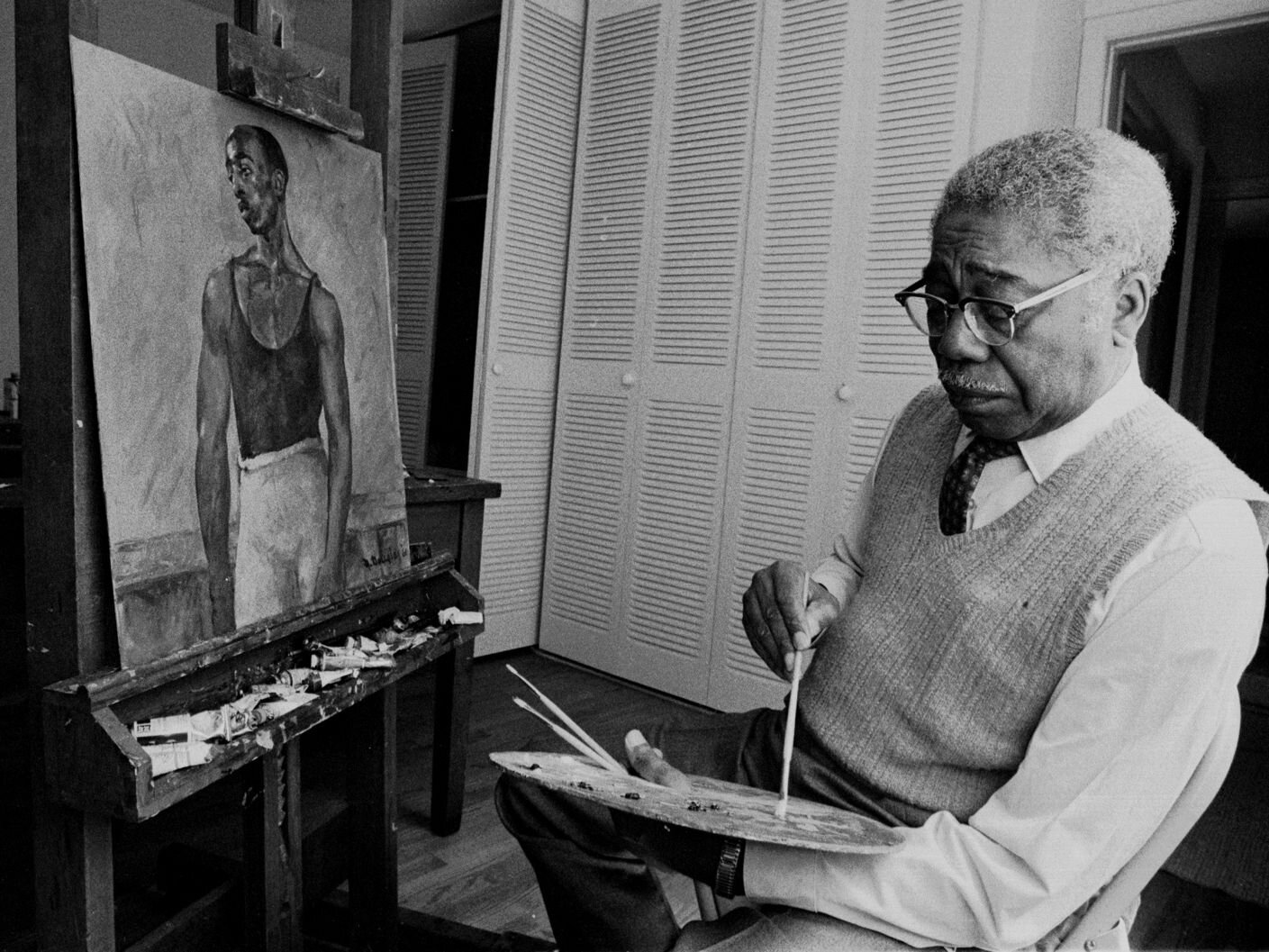Holding on to tradition with both hands: A labor of love
Aaron Douglas - Artist/Art Educator/ Trailblazer (1899-1979)
Lois Mailou Jones - Artist/Educator/ Trailblazer (1905-1998)
Agusta Savage - Sculptor/Art Educator/Trailblazer (1892-1962)
I can remember the first time that I was introduced to the paintings of Horace Pippin, Lois Mailou Jones, and Aaron Douglas. I was impressed with their level of skill, the strength of their messaging, and more important than any other accolade was their lived experiences. I am a student of history and I fell in love with the study of history long before I ever touched a paintbrush. For many years I could not be found without some history or sociology based book in my possession. One in particular that brings back many memories is Will Durant’s Story of Civilization, an eleven volume history of many historic periods in European history, and yes, I read every volume. In reading these books I took the route of our legendary historian Dr. John Henrik Clarke who was told by Arthur Schaumburg to study the history of your masters, for your history exists in between the lines of that history. I learned to listen to our scholars and I studied their particular style of presentation. I would learn to read between the lines and further, uncover some of the missing pages of history, particularly art history. My early inquisitive disposition carried over into my life as a visual artist and I from the very beginning started to look for myself in the history of art. I would dig deep into the books, videos, and presentations and still my thirst for the presence of my people went unfulfilled. It was not until I started to connect the dots of those great artist from the Harlem Renaissance that I wold piece together what amounts to a full ethnography of Black art history. One of the first things that I understood was that our contribution to the arts was so old that time itself had erased our beginnings as artists. There were moments that I would learn and feel so fulfilled from uncovering these histories that it literally felt like a family reunion. I was meeting my aunties, uncles, cousins, and long lost friends and it felt amazing (It still feels amazing). I learned that Aaron Douglas’s journey from Kansas to Harlem landed him in the office of W.E.B. Dubois where he would work in the mail room; though he had ambitions on becoming the chief illustrator for the Crisis Magazine, but he would have to earn that positon. While working he would meet the legendary sculptor Augusta Savage that was known to challenge racism and popular stereotypes about Black people. I would then uncover that a basement in Harlem became the Savage Studio of Arts and Crafts, a studio where a young Jacob Lawrence would study. Studying Jacob Lawrence’s style, particularly the migration series led my to the works of another artist, Horace Pippin. Pippin was from Pennsylvania and was a war veteran that would share with us so many moments from his life, including some particular moments with his beloved grandmother that were particularly special. After studying nearly every Harlem Renaissance artists I pushed back into the 19th century and met the great Henry O. Tanner who focused on religious themes early in his career but would move later to seascapes, portraits, and one of my favorites, The Banjo Lesson where he captured a powerful moment between a elder man and a youth transmitting cultural aesthetic across generations. Henry O. Tanner had some questionable issues with identity that I will eventually discuss but family is family, and he’s ours. Through my years of study I would develop a love for these artists and from that love grew a strong connection to the living artists around me today. Studying those histories will make clear to today’s artist that they are a part of a long lineage of creatives that bring an undeniably unique aesthetic to the world that we live in. Knowing these histories also gives the artists of today something very important, responsibility. Once the Black artists knows, they have the responsibility to hold on to these traditions and further, to become facilitators of these histories to the world. I am in the process of developing a full curriculum, more than 400 pages that includes teachers guides, assignments, quizzes, and a variety of projects that will be made available to schools, home schoolers, and art lovers in general. I received a grant in March 2020 that got the process started and the Aaron Douglas research section is complete and will soon be available for the public. I take my responsibility seriously when it comes to both encouraging and providing education in the arts, and along with my own works, this is my labor of love.
To be continued….



